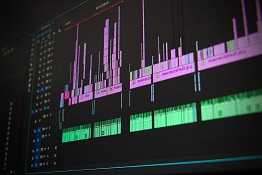Curved screen monitors and Professionals
Curved screen monitors have gained popularity in recent years, especially among professionals in design, photography, video editing, and other media-related fields. These monitors offer several benefits that can significantly enhance the workflow and overall experience for the aforementioned professionals. Some of their key advantages are as follow:
Improved Color Accuracy
One of the most critical aspects of media-related work is color accuracy. Curved monitors can often provide better color reproduction and consistency compared to flat screens. The curvature helps maintain a consistent distance between the viewer’s eyes and the display, reducing potential color distortions that may occur at the edges of a flat screen. This feature is especially beneficial for tasks that require precise color calibration, such as photo editing, graphic design, and video post-production.
Wider Field of View
Curved screens typically offer a wider field of view compared to flat monitors. The curvature of the display allows for a more immersive viewing experience, making it easier for professionals to work with multiple windows or applications simultaneously. For designers and video editors, having a larger workspace without the need for multiple monitors can greatly enhance productivity and efficiency.
Reduced Eye Strain
The gentle curve of the screen can help alleviate eye strain and fatigue, particularly during extended work sessions. By conforming to the natural shape of the human eye, curved monitors reduce the amount of eye movement required to focus on different parts of the screen. This can be especially advantageous for professionals who spend long hours editing and retouching media content.
Enhanced Visual Experience
Curved monitors create a more immersive and engaging visual experience for professionals working on media-related projects. Whether designing 3D animations, editing high-resolution photographs, or reviewing video footage, the curved display can add depth to the content and improve overall visual perception.
Better Peripheral Vision
The curved shape of the monitor allows for better utilization of peripheral vision. This is particularly useful in video editing or gaming, where users can have better awareness of their surroundings or timelines without the need to constantly pan or zoom.
Minimized Distortion
On larger flat monitors, users may experience distortion, especially at the edges, due to the viewing angle. With a curved monitor, distortion is significantly reduced, providing a more consistent and accurate representation of the content across the entire display.
Aesthetics and Ergonomics
Apart from the functional benefits, curved monitors also add an aesthetic touch to the workspace. The gentle curve can create a more modern and visually appealing setup. Additionally, the ergonomic benefits of curved monitors are noteworthy, as they can help reduce neck and eye strain by providing a more natural viewing angle.
Overall
Curved screen monitors can bring several advantages to professionals in design, photography, video editing, and other media-related fields. These benefits include improved color accuracy, a wider field of view, an enhanced visual experience, reduced eye strain, better peripheral vision, minimized distortion, and improved aesthetics and ergonomics. As the technology advances, curved monitors are likely to become an increasingly popular choice for professionals seeking to optimize their productivity and creativity in their daily work.

